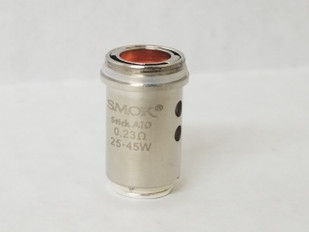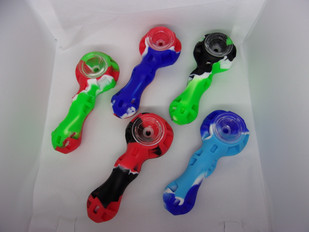- Home
- The Vape Mall Blog
- How Might CBD Help Your Pet Deal Better with Separation Anxiety?
How Might CBD Help Your Pet Deal Better with Separation Anxiety?
Posted by on
 Does you precious pup exhibit signs of separation anxiety
whenever you or another member of your household isn’t around? We often use this term flippantly, as it’s
precious that our furry friends miss us when we aren’t home. But the reality is that separation anxiety
has the potential to be crippling, and result in some seriously unhealthy
behaviors if left unchecked.
Does you precious pup exhibit signs of separation anxiety
whenever you or another member of your household isn’t around? We often use this term flippantly, as it’s
precious that our furry friends miss us when we aren’t home. But the reality is that separation anxiety
has the potential to be crippling, and result in some seriously unhealthy
behaviors if left unchecked.
annabidiol (CBD), however, may be the answer to separation anxiety in canines, as the role that this cannabinoid serves is to regulate their systems in a way that could potentially help them calm down. In fact, we’re even starting to see some veterinarians in their profession recommend CBD to our pets who show signs of stress in an effort to give them the relief that they deserve.
What is Separation Anxiety?
Separation anxiety is a term used to describe anxiety that is triggered when a dog is away from its trusted owner, or another member of the household with which the dog shares a close bond. Separation anxiety is commonly exhibited by children who are attached to and emotionally dependent on their parents. The same principles apply to canines, who are extremely dependent on us for their physical and emotional wellbeing.
Separation anxiety is more common in dogs than in cats due to the evolution of canines. While cats still maintain many of their wild traits, having been domesticated for only a few thousand years, canines have been evolutionarily conditioned to be more dependent on humans. Therefore, they’re less capable of fending for themselves, and rely on us to feel their best. This attachment explains the precious bond that we share with canines, but it also means that dogs are fairly prone to feeling separation anxiety when we aren’t around to provide them with love and attention.
What are Examples of Separation Anxiety?
Separation anxiety implies that a dog is only anxious when separated from the human who the dog is bonded to. Separation anxiety can manifest under specific conditions, such as these ones below.
#1: Leaving for Work
A dog may exhibit some signs of separation anxiety when their owner is at work each day, especially if there is no other person at home to look after the dog.
#2: Going on a Trip
Separation anxiety is common when a dog’s owners are away on vacation and the dog is being watched by someone else. The dog may feel worried that the owners are not going to return.
#3: A Household Member’s Move or Death
Separation anxiety can be a long-term issue if a beloved member of the household has moved out of the house or has died.
What are Symptoms of Separation Anxiety?
The common signs of separation anxiety include a dog exhibiting symptoms of anxiety only when a member of the household is not in the home. These symptoms can include pacing, panting, whimpering, refusing to eat, trembling, and showing no interest in playtime.
Separation anxiety can also lead to extreme symptoms depending on the natural temperament of your dog. More extreme symptoms include destructive behaviors around the house, such as scratching or chewing furniture, or urinating inside the home. Even more concerning behaviors are self-destructive, such as gnawing on their skin or scratching themselves incessantly.
How is Separation Anxiety Typically Treated in Canines?
Separation anxiety can be quite hard of a condition to treat, since anxiety treatments work differently from one dog to another. The initial step to controlling separation anxiety is speaking to a veterinarian, who can rule out any other conditions contributing to the anxiety. They can also consider the specifics of your situation and make personalized recommendations.
Some solutions offered are relatively simple, such as finding ways to keep the dog entertained when you’re not at home. More advanced measures may include some type of anti-anxiety medication, although not all dog owners are comfortable with giving their dogs anxiety medications.
Would CBD Help Dogs with Separation Anxiety?
Interestingly, cannabidiol, which is nontoxic to canines, may be a natural means for helping them deal with the anxiety caused by being away from the human that they are bonded to. Like humans, dogs possess an endocannabinoid system, which is a bodily system that uses cannabinoids to regulate specific bodily process by sending these compounds to cannabinoid receptors found in every system of the body.
We recognize that cannabidiol works with cannabinoid receptors (CB receptors) in the brain and nervous system that balance specific processes including the regulation of neurotransmitters like cortisol and serotonin, two hormones that have an impact on anxiety and stress levels. When consuming CBD, it has the potential to increase feelings of calmness and bliss based on its relationship to these cannabinoid receptors.
Because dogs have an endocannabinoid system (ECS), CBD can fulfill these roles just as effectively in canines as it does in humans, as we are finding out when it comes to anxiety or anxiousness.
What You Should Know About Administering CBD to Your Dog for Separation Anxiety
By keeping all of these tips in mind, you will have the highest likelihood of success with the hemp plant for addressing separation anxiety.
Tip #1: Talk to Your Veterinarian
Your veterinarian knows your dog’s needs and medical circumstances and can help you come up with a more personalized routine. Basically, a vet can consider medications that your dog is on to determine whether or not they can be safely taken with CBD.
Tip #2: Choose a CBD Product for Dogs
Make sure that you choose a CBD formula made specially for dogs, as these products are safer. For one thing, they have dosing guides that consider the weight of your dog. Secondly, they are made with ingredients that are nontoxic to dogs, whereas CBD products for humans may contain essential oils and other ingredients that can be deadly to canines.
Tip #3: Be Consistent with Dosing
You should try incorporating cannabidiol into your dog’s daily routine for the best results. The more consistently one takes hemp, the more effectively the endocannabinoid system can use it. When taken sporadically, the endocannabinoid system tends to store a good portion of cannabinoids for later use.
Tip #4: Choose an Agreeable Formula and Delivery Method
Make sure that you select a formula and delivery method that works with your dog’s needs. For separation anxiety, you’ll need a non-topical method like a treat or a tincture. Choose a formula that has a flavor that your dog loves so that they enjoy each dose.
A Calmer Dog is a Happier Dog
Overall, it can be hard to see our dogs become so distressed when we are away from them, but fortunately, there are ways to help your pet manage their separation anxiety. For a natural, holistic option, you can try CBD, which again, is already taken by dogs all over the country for various purposes.
 Loading... Please wait...
Loading... Please wait...



















